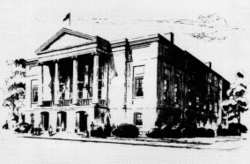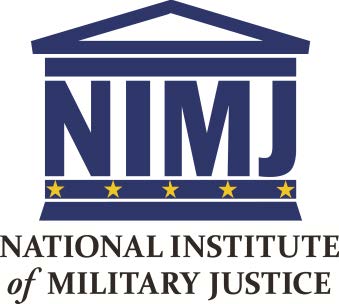|
Today, CAAF will hear oral arguments in United States v. Ozbirn. The granted question is: WHETHER THE EVIDENCE THAT APPELLANT ASKED FOR “NAKED PICTURES” FROM ADULTS PRETENDING TO BE MINORS IS LEGALLY SUFFICIENT TO SUSTAIN A CONVICTION FOR ATTEMPTED RECEIPT OF CHILD PORNOGRAPHY. CAAF Briefs here. Appellant was convicted of attempted sexual abuse and assault of a child and attempted receipt of child pornography, all in violation of Article 80, UCMJ. The convening authority approved appellant’s sentence of a dishonorable discharge, confinement for three years, and reduction to the grade of E-1. PERTINENT FACTS In August 2017, Airman First Class Jacob M. Ozbirn (Appellant), stationed at Royal Air Force Mildenhall in the UK, exchanged messages with three individuals who held themselves out to be two 12-year-old girls, and a 13-year-old girl. Appellant engaged in sexually explicit conversation with all three and asked each of them to send him naked pictures of themselves. He also made arrangements to meet two of the girls in order to have sexual intercourse. These three “girls,” however, were actually three different adult British citizens working with groups (not supported or approved by any government entity) organized for the purpose of identifying people who engage in inappropriate online conversations with children. When Appellant arrived to meet up with one of the “girls,” he was blocked by six members of the group who took his keys and phone, and attempted to interrogate him for approximately 45 minutes while waiting for local police to arrive. Police then arrived and took Appellant into custody. TRIAL JUDGE’S RULING Appellant was charged with three specifications of attempted sexual abuse of a child, one for each “girl,” each alleging that Appellant attempted to commit a lewd act by communicating indecent language to a child under the age of 16 years “on divers occasions.” Appellant was additionally charged with one specification of attempted sexual assault of a child and attempted receipt of child pornography on divers occasions. A general court-martial composed of officer members acquitted Appellant of the specification alleging attempted sexual abuse of a child with respect to one of the girls, but convicted Appellant of the remaining specifications. AFCCA’s DECISION Appellant argued that the evidence was legally and factually insufficient to support any of the specifications for which he was convicted. The Court did set aside the language that Appellant attempted sexual abuse of a child “on divers occasion” as legally insufficient, but otherwise found the evidence to be legally and factually sufficient to support every specification. In regards to the specification of attempted receipt of child pornography, the Court found that “the court members could readily conclude Appellant’s direct and repeated solicitations for naked pictures were overt acts that went beyond mere preparation and tended to effect the commission of the offense of receipt of child pornography.” Further, the Court found that the Government was not required to introduce a specific statement by Appellant indicating he desired a lascivious display of the “girls’” genitals or pubic areas, but rather intent could be demonstrated by circumstantial evidence. The Court concluded that the Government introduced strong circumstantial evidence of Appellant’s intent through the entirely sexual nature of Appellant’s communication with the “girls,” and the fact that it was in this context that he requested “naked” pictures of them. Notably, Judge Key dissented from the majority’s holding that the conviction for attempted receipt of child pornography was legally and factually sufficient, finding that Appellant’s request for “naked” pictures was insufficient to prove he intended to receive material that met the legal definition of child pornography. AFCCA opinion here. THE ARGUMENTS Appellant argues that his request for “naked pictures” does not meet the specific definition of child pornography. Appellant contends that without evidence of specific requests to receive pictures of the child’s genital areas or of the child exhibiting sexual acts, there is insufficient direct or circumstantial evidence that Appellant expected to receive pictures of the “girls’” genitals or pubic area displayed in a lascivious manner. Appellant notes that “[n]udity, without more, is protected expression under the First Amendment”, and that the Supreme Court and the CAAF have “drawn a distinction between mere naked photographs of children and the specific contraband of child pornography.” Appellant additionally contends that his case is distinguishable from other cases resolved by the service courts of appeal in which the appellant sent undercover officers pretending to be children pictures or videos of his own genitals, which Appellant never did. The Government counters that the AFCCA correctly found that the totality of the evidence proves Appellant specifically intended to receive child pornography and is sufficient to support Appellant’s guilt beyond a reasonable doubt. The Government argues that “specific intent” does not require exact language but rather should be considered under the totality of the circumstances. According to the Government, Appellant’s own words, captured in the messages to the “girls,” made it clear he was requesting the naked pictures in a sexual context and intended to receive pictures that included images of the genitalia and would excite a sexual response. The Government further contends there is no reason to believe Appellant “meant his requests to be devoid of any sexual context or to include images of only breasts without genitalia.” Rather, the fact that Appellant requested naked pictures from individuals he believed to be minors, in the midst of sexually explicit conversations which focused on genitalia, and then acted on his desire to have sex with minors is sufficient evidence to overcome the “very low threshold” required for legal sufficiency. Emily EslingerSenior Intern
0 Comments
Your comment will be posted after it is approved.
Leave a Reply. |
Links
CAAF -Daily Journal -Current Term Opinions ACCA AFCCA CGCCA NMCCA Joint R. App. Pro. Global MJ Reform LOC Mil. Law Army Lawyer Resources Categories
All
Archives
April 2022
|



